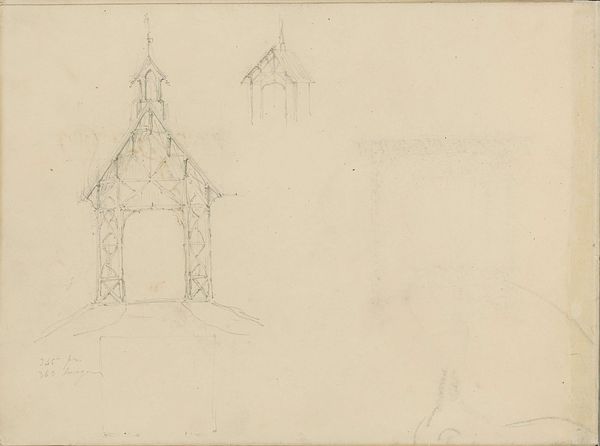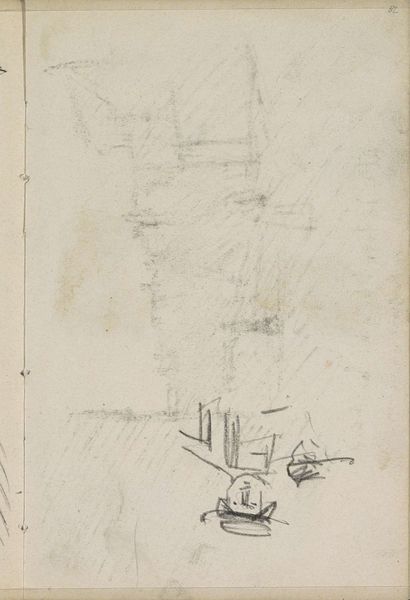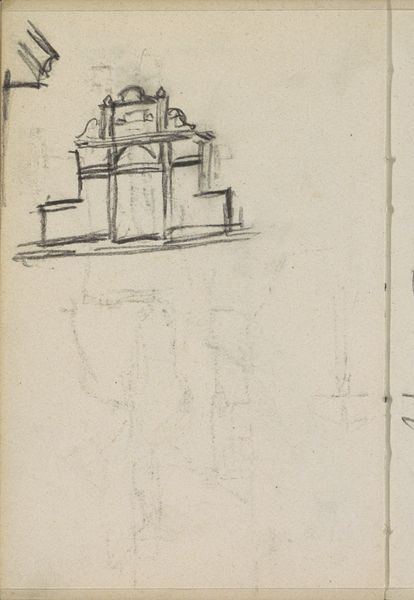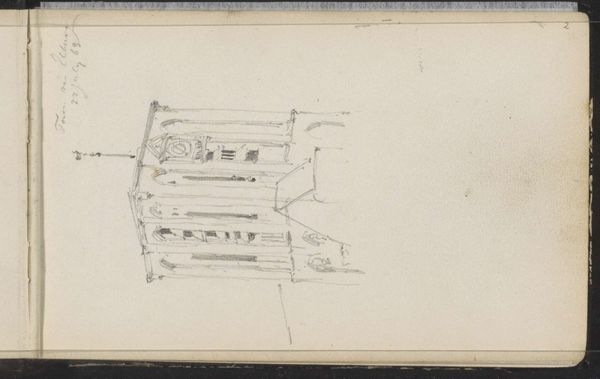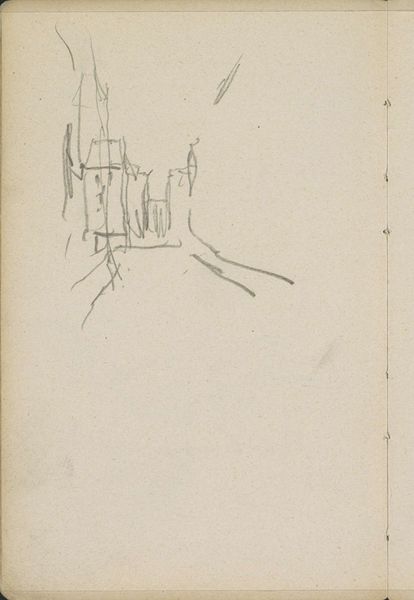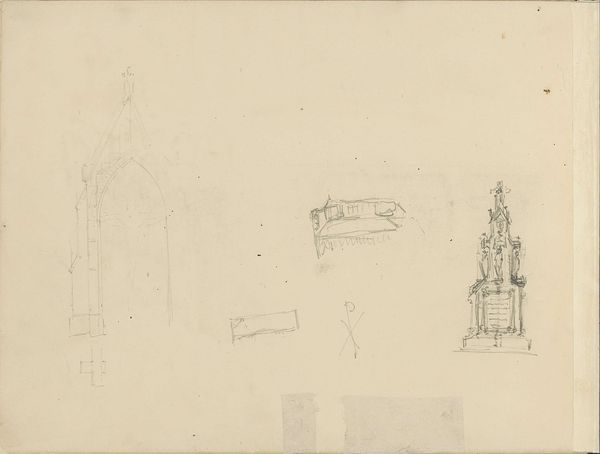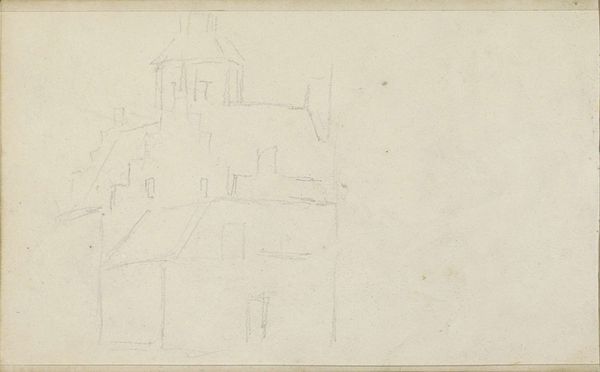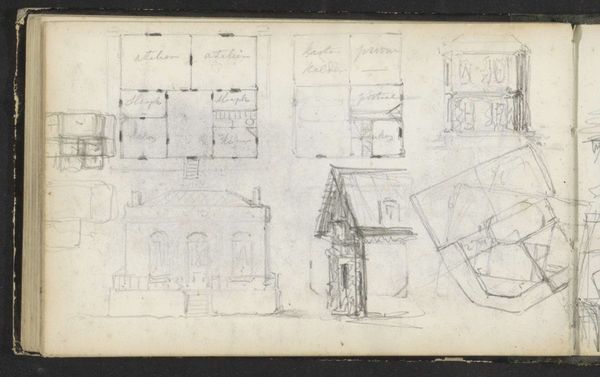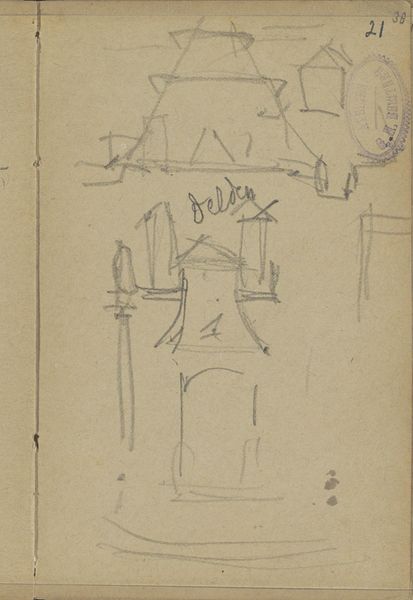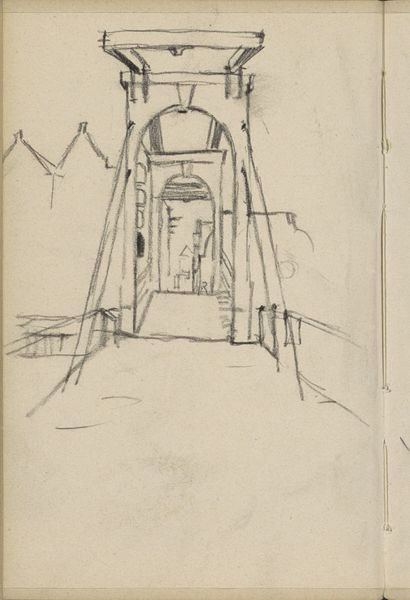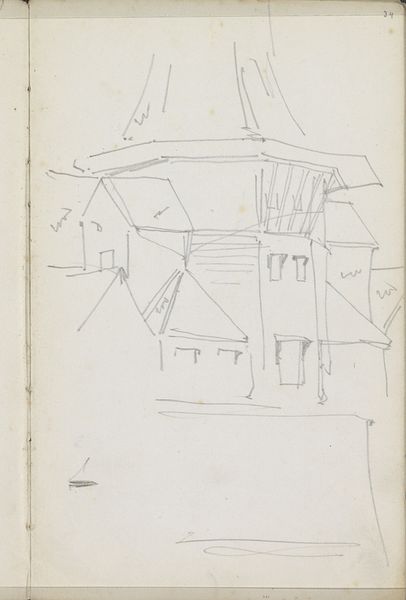
drawing, pencil
#
drawing
#
toned paper
#
light pencil work
#
quirky sketch
#
incomplete sketchy
#
landscape
#
personal sketchbook
#
ink drawing experimentation
#
pencil
#
line
#
sketchbook drawing
#
watercolour illustration
#
storyboard and sketchbook work
#
sketchbook art
#
realism
Dimensions: height 358 mm, width 237 mm
Copyright: Rijks Museum: Open Domain
Editor: Here we have "Kerktoren," a pencil drawing on toned paper by Eugène François de Block, sometime between 1822 and 1893. It's a rather understated piece, almost skeletal in its simplicity. What do you see in this work? Curator: It's interesting to consider the church tower not just as architecture, but as a symbol of power and community within its historical context. How does its presence in the landscape – even in this preliminary sketch – reinforce or challenge societal hierarchies of the time? Who was centered and who was marginalized within the religious and social structures it represents? Editor: So you’re saying we shouldn't just look at it as a building? Curator: Exactly. This sketch invites us to consider the church's role in shaping individual identities and experiences. Its location, scale, and architectural style would have impacted different communities differently. Can we glean anything about those possible impacts from this representation? For example, think about class. Editor: Hmm, the sketchiness almost democratizes the image – it’s not imposing like a grand, finished painting might be. It feels accessible. Curator: Precisely. Consider that in relation to the democratization movements of the 19th century. De Block, even unconsciously, may have captured that tension between traditional authority and emerging social consciousness. This sketch, a study, is perhaps more telling because of its supposed 'incomplete' status. Editor: I never thought of it that way. It’s a window into societal shifts, not just a building. Curator: Every work of art exists within, and speaks to, its time. And continues to speak to us, if we're willing to listen. Editor: That really broadened my view. Thanks!
Comments
No comments
Be the first to comment and join the conversation on the ultimate creative platform.
